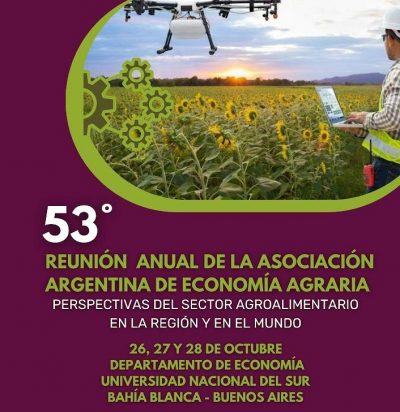Ver ítem
- xmlui.general.dspace_homeCentros e Institutos de InvestigaciónCIEP. Centro de Investigación en Economía y ProspectivaPresentaciones a congresosxmlui.ArtifactBrowser.ItemViewer.trail
- Inicio
- Centros e Institutos de Investigación
- CIEP. Centro de Investigación en Economía y Prospectiva
- Presentaciones a congresos
- Ver ítem
¿Cuál es la edad óptima de vida de una plantación de vid?
Resumen
La producción vitivinícola, combina variados factores para obtener aquel producto que luego es tan apreciado por los consumidores en todo el mundo. La producción de uva para vinificar combina factores como son tierra, trabajo, fertilizantes, fitosanitarios, entre otros insumos y a su vez se ve influenciado por cuestiones climáticas. El factor tierra, el cual es fijo y escaso, influye no solo por las cualidades que tenga su suelo, sino también por las
[ver mas...]
La producción vitivinícola, combina variados factores para obtener aquel producto que luego es tan apreciado por los consumidores en todo el mundo. La producción de uva para vinificar combina factores como son tierra, trabajo, fertilizantes, fitosanitarios, entre otros insumos y a su vez se ve influenciado por cuestiones climáticas. El factor tierra, el cual es fijo y escaso, influye no solo por las cualidades que tenga su suelo, sino también por las condiciones climáticas/ambientales en las que este está envuelto.
La vitivinicultura es una actividad productiva con ciclos repetitivos lo que permite maximizar el valor que se obtiene de la tierra sobre la que se realiza la actividad productiva. Para esto se modificó la fórmula de Faustmann a fin de obtener cual es la edad de la viña óptima a la cual removerla y comenzar con el proceso de renovarla. Concluyendo que la edad optima de la plantación de vid se obtendrá de la igualdad entre el interés anual que genera el VAN* del ciclo productivo de la vid a perpetuidad con respecto al valor de los beneficios obtenidos en el último año de vida de la vid.
[Cerrar]
Wine production combines various factors to obtain that product that is then so appreciated by consumers around the world. The production of grapes for winemaking combines factors such as land, work, fertilizers, phytosanitary products, among other inputs, and in turn is influenced by climatic issues. The land factor, which is fixed and scarce, influences not only the qualities of its soil, but also the climatic/environmental conditions in which it is
[ver mas...]
Wine production combines various factors to obtain that product that is then so appreciated by consumers around the world. The production of grapes for winemaking combines factors such as land, work, fertilizers, phytosanitary products, among other inputs, and in turn is influenced by climatic issues. The land factor, which is fixed and scarce, influences not only the qualities of its soil, but also the climatic/environmental conditions in which it is involved.
Viticulture is a productive activity with repetitive cycles, which allows maximizing the value obtained from the land on which the productive activity is carried out. For this, the Faustmann formula was modified in order to obtain the optimal age of the vineyard at which to remove it and begin the process of renewing it. Concluding that the optimal age of the vine plantation will be obtained from the equality between the annual interest generated by the NPV* of the productive cycle of the vine in perpetuity with respect to the value of the benefits obtained in the last year of the vine's life.
[Cerrar]

Autor
Descripción
Ponencia y presentación en diapositivas
Fuente
53° Reunión Anual de la Asociación Argentina de Economía Agraria: “Perspectiva del Sector Agroalimentario en la Región y en el Mundo”. Asociación Argentina de Economía Agraria (AAEA) y Universidad Nacional del sur Bahía Blanca. 26, 27 y 28 de octubre 2022.
Fecha
2022-10
Editorial
Asociación Argentina de Economía Agraria (AAEA)
Formato
pdf
Tipo de documento
documento de conferencia
Palabras Claves
Derechos de acceso
Abierto
 Excepto donde se diga explicitamente, este item se publica bajo la siguiente descripción: Creative Commons Attribution-NonCommercial-ShareAlike 2.5 Unported (CC BY-NC-SA 2.5)
Excepto donde se diga explicitamente, este item se publica bajo la siguiente descripción: Creative Commons Attribution-NonCommercial-ShareAlike 2.5 Unported (CC BY-NC-SA 2.5)


